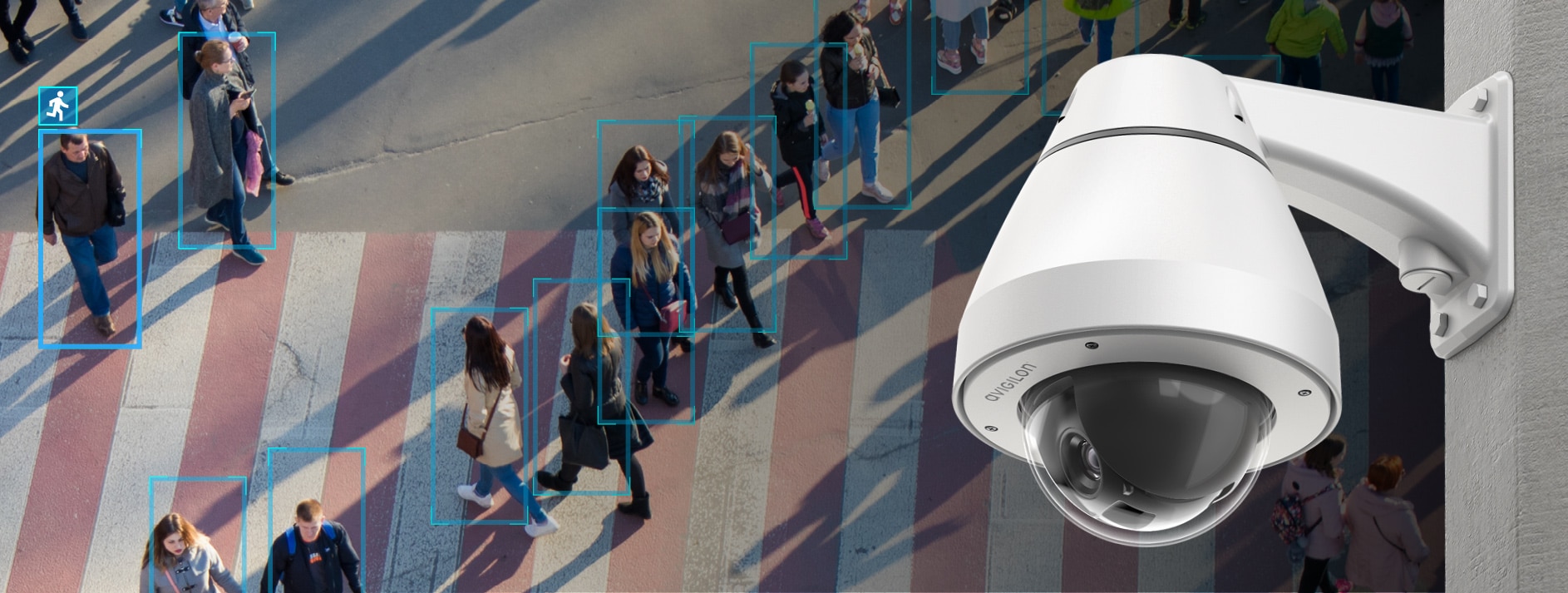4 minute read
When you are in the market for PTZ cameras, getting the right fit for your budget and needs will be a struggle. But if you know what to look for, you can get affordable, high-performance IP PTZ cameras that work over IP networks.
What does PTZ mean on security cameras? And why has it become such a buzzword?
In this article, you’ll get to understand PTZ cameras. You’ll also find out the key defining factors to look for when buying one.
What is a PTZ camera?
A PTZ camera is a CCTV device that combines all the best qualities of standard cameras into one. PTZ (pan-tilt-zoom) devices allow operators to view spaces under surveillance using a remote controller.
Modern PTZ cameras also come with multiple connectivity options that enable operators to change the direction of focus and zoom into footage without completely losing picture quality. With IP PTZ cameras, you only need an internet connection to transmit the footage in real time remotely.
Due to the versatility of PTZ outdoor security cameras, you can use them in any space, from residential homes to airport terminals.
Do you need them?
Most people compare dome security cameras with PTZ cameras in terms of versatility and durability. On the one hand, PTZ cameras have many mechanical moving parts which corrode and wear out over time. Sometimes, network issues will cause lag and delays in transmitting live footage to the mainframe.
Notwithstanding these flaws, PTZ cameras are popular because they contain powerful lenses that can cover vast expanses of land and property. And most importantly, PTZs are cheaper than complex dome cameras.
PTZ cameras: what to look for
Before buying a new PTZ camera, always look through its capabilities first. You can also consult with an expert to see if the camera is of high quality. Here are the must-have features of a PTZ camera.
- Wide field of view
A PTZ camera must have a wide field of view, which should be accessible with a wide degree of freedom. During installation, try to reduce the blind spots to the barest possible minimum. You can also use the remote controller to eliminate human error that leads to these blind spots. - Powerful zoom
As part of the key selling point for PTZs, your camera must have a powerful zoom to get non-pixelated footage. You can buy PTZ cameras that can zoom up to 40x the object’s standard size. However, high-res cameras present a memory storage problem due to the sheer size of individual files. But with modern compression algorithms and data storage tools, you can save hours of surveillance footage for a case-by-case retrieval without ruining the original quality. - Autofocus (motion tracking)
High-end PTZ cameras use laser technology to detect movements within the camera’s field of vision. This motion tracking technology makes it easier for the lens to focus on an object when the camera is changing angles. - Weather-resistant
PTZ cameras are not great for outdoor use because they don’t have enough protective covering. However, some modern cameras are weather-resistant, which means you can use them in both outdoor and indoor spaces. And if your PTZ camera can withstand the weather, then you won’t need to worry about connectivity issues. - Alarm triggers
When installing a camera in an unoccupied space, you might want a PTZ with alarm triggers. For example, if the camera is in a warehouse, the motion sensors can trigger alarms when something appears in the frame. Museum curators and owners of artwork rely on hybrid PTZ cameras with alarm triggers to protect their work from theft and unforeseen circumstances. - Night vision capabilities
High-end cameras often have a long-range optical system that sees up to 100 ft. But even if you have the best camera during the day, it is effectively useless at night. Nowadays, PTZ cameras come with built-in infrared illuminators, which emit invisible white light for illuminating dark spaces. To give your space 24/7 protection, use night vision PTZ cameras to keep an eye on your property.
Conclusion
If you don’t know what makes a high-end PTZ camera, you will end up with a device that has limited functionality. When shopping for new PTZ cameras, make sure that night-vision features are functional. If possible, limit your focus on remote-controlled cameras with wide-angle lenses. And depending on your budget, you can add motion tracking laser technology to trigger intruder alarms





